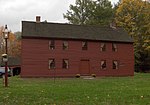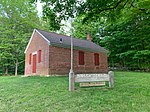Coventry, Connecticut
Coventry, ConnecticutGreater HartfordTowns in Capitol Planning Region, ConnecticutTowns in ConnecticutTowns in Tolland County, Connecticut ... and 1 more
Use mdy dates from July 2023

Coventry ( KOV-ən-tree) is a town in the Capitol Planning Region, Connecticut. The population was 12,235 at the 2020 census. The birthplace of Captain Nathan Hale, Coventry is home to the Nathan Hale Homestead, which is now a museum open to the public. Coventry was incorporated in May 1712.
Excerpt from the Wikipedia article Coventry, Connecticut (License: CC BY-SA 3.0, Authors, Images).Coventry, Connecticut
Beverly Trail,
Geographical coordinates (GPS) Address Nearby Places Show on map
Geographical coordinates (GPS)
| Latitude | Longitude |
|---|---|
| N 41.784444444444 ° | E -72.338888888889 ° |
Address
Beverly Trail 24
06238
Connecticut, United States
Open on Google Maps







